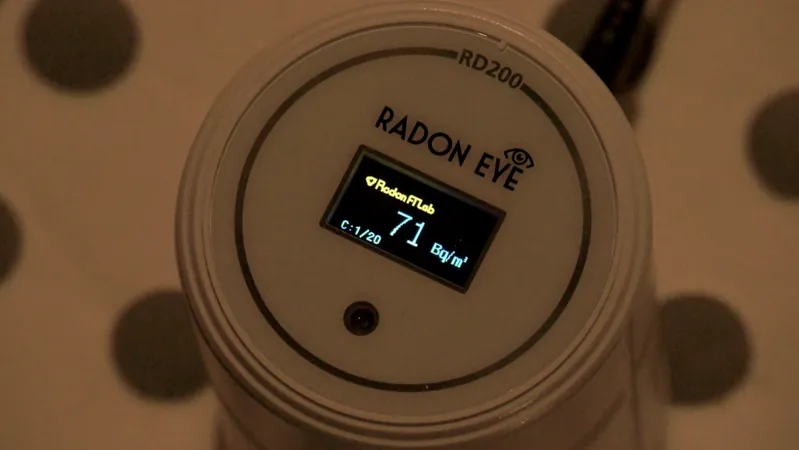
Shocking Discovery: 1 in 5 Canadians Face High Radon Levels in Their Homes!
2024-12-30
Author: Michael
A Disturbing Discovery
A disturbing new report reveals that a silent and dangerous threat is infiltrating more Canadian households than ever before. Radon, an invisible, odorless, and tasteless gas, is being detected at perilously high levels in homes across the nation, impacting 17.8% of the population—or roughly one in five Canadians.
The Source of Radon
This alarming information comes from a study conducted by researchers at the University of Calgary, supported by Health Canada. Alex Budd, the owner of Budd Radon Services, explains that radon is a natural gas released from the decay of uranium found in soil and rock. 'It seeps up into your home through cracks in the foundation and sump pumps, and it can accumulate to dangerous levels,' he warns.
Health Risks of Radon
Radon is the second leading cause of lung cancer, following smoking. The risk is particularly heightened during winter months when the ground is frozen and homes are sealed up with limited ventilation. In these conditions, radon levels can skyrocket, making it imperative for homeowners to be aware of their indoor air quality.
Testing for Radon
Budd underscores the importance of testing homes for radon, as without a test, there's no way to know if your home is at risk. Health Canada's radon action guideline sets the acceptable level at 200 becquerels per cubic meter (Bq/m³), while the U.S. sets the threshold at 150 Bq/m³, and the World Health Organization stands by a more cautious limit of 100 Bq/m³.
Mitigation Measures
Those exceeding these limits are advised to mitigate their homes within a year to prevent health complications, which can vary from person to person. 'Just like smoking, some people may never develop lung cancer, while others can, even after short-term exposure,' Budd noted, emphasizing the unpredictable nature of radon-related health risks.
Costs and Solutions
Testing kits for radon are readily available at local hardware stores, with varying price points to fit different budgets. For homeowners concerned about high levels of radon, installing a mitigation system can cost around $2,500. This system operates by drawing air from beneath the home, expelling it outside to ensure that radon does not infiltrate living spaces.
A Resident's Experience
Testimony from Kinburn resident Doug McClenahan highlights the critical need for action. After discovering radon levels of an astonishing 1,240 Bq/m³ in his basement, he promptly installed a mitigation system and is now seeing levels drop to a safer 25 to 30 Bq/m³. 'I feel much more comfortable now knowing that my family is safe,' he stated.
The Urgency of Testing
Experts caution that radon levels can fluctuate dramatically even within the same neighborhood. Therefore, it's crucial for all homeowners to stay vigilant and conduct regular testing to protect their families from this hidden threat.
Take Action Now!
Don’t leave your health to chance—take action today and ensure your home is radon-free!



 Brasil (PT)
Brasil (PT)
 Canada (EN)
Canada (EN)
 Chile (ES)
Chile (ES)
 Česko (CS)
Česko (CS)
 대한민국 (KO)
대한민국 (KO)
 España (ES)
España (ES)
 France (FR)
France (FR)
 Hong Kong (EN)
Hong Kong (EN)
 Italia (IT)
Italia (IT)
 日本 (JA)
日本 (JA)
 Magyarország (HU)
Magyarország (HU)
 Norge (NO)
Norge (NO)
 Polska (PL)
Polska (PL)
 Schweiz (DE)
Schweiz (DE)
 Singapore (EN)
Singapore (EN)
 Sverige (SV)
Sverige (SV)
 Suomi (FI)
Suomi (FI)
 Türkiye (TR)
Türkiye (TR)
 الإمارات العربية المتحدة (AR)
الإمارات العربية المتحدة (AR)